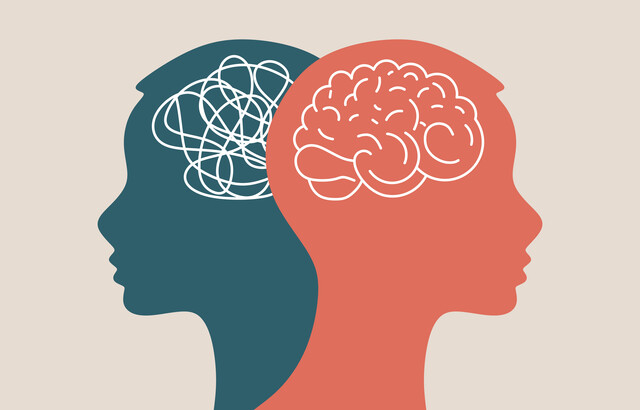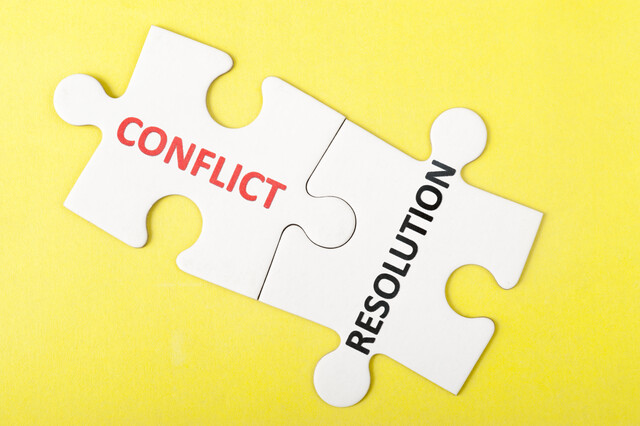Online Class: Domestic Violence Awareness

-
11Lessons
-
15Exams &
Assignments -
8Hours
average time -
0.8CEUs
Course Description
Understanding and Combatting Domestic Violence: A Comprehensive Guide
In recent years, the disturbing increase in domestic violence, often termed domestic abuse, has captured global attention. This pervasive issue transcends boundaries of age, gender, race, and socioeconomic status. Addressing domestic violence demands a multi-faceted approach: beyond just alleviating immediate suffering and providing protection, it's imperative to comprehend its roots. By understanding the underlying triggers, we can equip future generations with the tools to foster abuse-free environments.
Course Overview:
This comprehensive course offers an in-depth exploration into the multifaceted aspects of domestic violence. We aim to shed light on the psychological, social, and legal dimensions of abuse, providing learners with a holistic understanding that is essential for those keen on making impactful changes, be it personally, professionally, or at community levels.
Course Modules:
-
Lesson 1: Defining Domestic Violence - Delve deep into the nature of domestic abuse, exploring its forms and manifestations, supported by real-life cases and statistical overviews.
-
Lesson 2: Identifying Abuse - Recognize the subtle and overt signs of domestic violence, enhancing your ability to detect and intervene effectively.
-
Lesson 3: Decoding the Victim's Perspective - Examine the intricate reasons that may cause victims to remain with their abusers, supported by psychological and sociological insights.
-
Lesson 4: Lending a Helping Hand - Equip yourself with effective strategies and communication skills to assist victims, empowering them to break free from toxic situations.
-
Lesson 5: Navigating Legal Labyrinths - Familiarize yourself with essential legal aspects, including Protection from Abuse (PFA) and Protective Restraining Orders (PRO), understanding the limitations and strengths of the legal system.
-
Lesson 6: Safety First - Learn about vital safety measures, from creating robust escape plans to ensuring protection for children, ensuring immediate protection from threats.
-
Lesson 7: Grappling with the Aftermath - Delve into the long-term psychological and emotional consequences of abuse, and the rehabilitation processes involved.
-
Lesson 8: Rediscovering Love - Understand the challenges and intricacies of forging relationships post-abuse, providing survivors with hope and guidance for a brighter future.
-
Lesson 9: Championing Survivors - Acquire techniques to support and uplift survivors, enabling their seamless integration into society, fortified with newfound strength.
-
Lesson 10: Breaking the Chain - Explore effective strategies to prevent the perpetuation of abuse across generations, safeguarding future families.
-
Lesson 11: A World Without Abuse - Envision and work towards a society where violence is an anomaly, arming yourself with tools for sustained community awareness and action.
Why This Course?
Domestic violence is not just an individual or family problem; it's a societal concern. Equipping oneself with knowledge is the first step towards combating this grave issue. Our course is structured to provide not just an academic perspective but to foster empathy, resilience, and proactive responsiveness among participants.
With real-world examples, case studies, expert interviews, and interactive sessions, learners will be exposed to a rich tapestry of insights, preparing them to be vanguards against domestic abuse. Whether you're a social worker, law enforcement official, counselor, or a concerned individual, this course offers invaluable insights and skills.
By the end of this course, participants will not only have gained a profound understanding of domestic violence but will be empowered to effect tangible changes in their communities. Together, we can shape a world where homes are safe havens, devoid of fear and filled with love. Enroll now and be part of this transformative journey.
- Business
- Business Ethics Courses
- Harassment Prevention Courses
- Human Resources Certifications
- Management
- Aromatherapy Courses
- Caregiver Courses
- Career Development Courses
- Communications Courses
- Confidence and Self Esteem Courses
- Healing
- Human Anatomy Courses
- Medical Skills
- Health & Medicine
- Nutrition
- Marketing
- Microsoft Office Certification Courses
- Life Coaching Courses
- Self-Improvement
- Small Business Certifications
- Safety
- Writing Improvement
- Business Writing Courses
Course Lessons
Lesson 1. A Comprehensive Look at the Scourge of Domestic Violence
 Lesson 1 Video
Lesson 1 Video Review Practice Worksheet: Lesson-1-WorkSheet-9272.pdf
Review Practice Worksheet: Lesson-1-WorkSheet-9272.pdf Lesson discussions: Reasons for Taking this Course
Lesson discussions: Reasons for Taking this Course Assessment: Lesson 1 Review Exam
Assessment: Lesson 1 Review Exam
Lesson 2. Domestic Abuse Warning Signs
 Lesson 2 Video
Lesson 2 Video Review Practice Worksheet: Lesson-2-Downloadable-9273.pdf
Review Practice Worksheet: Lesson-2-Downloadable-9273.pdf Assessment: Lesson 2 Review Exam
Assessment: Lesson 2 Review Exam
Lesson 3. Exploring Barriers to Freedom in Abusive Relationships
 Lesson 3 Video
Lesson 3 Video Review Practice Worksheet: Lesson-3-Activity-9274.pdf
Review Practice Worksheet: Lesson-3-Activity-9274.pdf Lesson discussions: Why do victims stay?
Lesson discussions: Why do victims stay? Complete: Lesson 3 Activity
Complete: Lesson 3 Activity Assessment: Lesson 3 Review Exam
Assessment: Lesson 3 Review Exam
Lesson 4. Helping Hands: Ways to Support Domestic Abuse Survivors
 Lesson 4 Video
Lesson 4 Video Review Practice Worksheet: Lesson-4-WordSearch-9275.pdf
Review Practice Worksheet: Lesson-4-WordSearch-9275.pdf Assessment: Lesson 4 Review Exam
Assessment: Lesson 4 Review Exam
Lesson 5. Protective Orders: A Lifeline for Safety
 Lesson 5 Video
Lesson 5 Video Review Practice Worksheet: Lesson-5-WorkSheet-9276.pdf
Review Practice Worksheet: Lesson-5-WorkSheet-9276.pdf Lesson discussions: Protection Orders
Lesson discussions: Protection Orders Assessment: Lesson 5 Review Exam
Assessment: Lesson 5 Review Exam
Lesson 6. Plan, Protect, Prevail: Crafting Your Path to Safety Amid Domestic Challenges
 Lesson 6 Video
Lesson 6 Video Review Practice Worksheet: Lesson-6-Activity-9277.pdf
Review Practice Worksheet: Lesson-6-Activity-9277.pdf Assessment: Lesson 6 Review Exam
Assessment: Lesson 6 Review Exam
Lesson 7. Breaking Free: The Pathway to Rebuilding After Trauma
 Lesson 7 Video
Lesson 7 Video Review 2 Practice Worksheets
Review 2 Practice Worksheets Assessment: Lesson 7 Review Exam
Assessment: Lesson 7 Review Exam
Lesson 8. Crafting Healthy Relationships: The Survivor's Roadmap
 Lesson 8 Video
Lesson 8 Video Review Practice Worksheet: Lesson-8-WordSearch-9278.pdf
Review Practice Worksheet: Lesson-8-WordSearch-9278.pdf Assessment: Lesson 8 Review Exam
Assessment: Lesson 8 Review Exam
Lesson 9. Support Structures for Abuse Recovery
 Lesson 9 Video
Lesson 9 Video Review Practice Worksheet: Lesson-9-WordSearch-9279.pdf
Review Practice Worksheet: Lesson-9-WordSearch-9279.pdf Assessment: Lesson 9 Review Exam
Assessment: Lesson 9 Review Exam
Lesson 10. Breaking Free from the Chains: A Comprehensive Guide to Ending Domestic Abuse
 Lesson 10 Video
Lesson 10 Video Review Practice Worksheet: Lesson-10-HomeWork-9280.pdf
Review Practice Worksheet: Lesson-10-HomeWork-9280.pdf Complete: Lesson 10 Activity
Complete: Lesson 10 Activity Assessment: Lesson 10 Review Exam
Assessment: Lesson 10 Review Exam
Lesson 11. Building Healthy Relationships: An Educational Approach to Eliminating Domestic Violence
 Lesson 11 Video
Lesson 11 Video Review Practice Worksheet: Lesson-11-Activity-9281.pdf
Review Practice Worksheet: Lesson-11-Activity-9281.pdf Lesson discussions: Stopping Abuse; Program Evaluation Follow-up Survey (End of Course); Course Comments
Lesson discussions: Stopping Abuse; Program Evaluation Follow-up Survey (End of Course); Course Comments Complete: Lesson 11 Activity
Complete: Lesson 11 Activity Assessment: The Final Exam
Assessment: The Final Exam Assessment: Lesson 11 Review Exam
Assessment: Lesson 11 Review Exam
Learning Outcomes
- Identify common myths and misconceptions about domestic violence and explain their implications on societal understanding and victim support.
- Recognize and describe the various forms of domestic violence, including physical, emotional, psychological, financial, and sexual abuse.
- Identify, utilize, and evaluate community and professional resources to effectively support individuals experiencing domestic violence.
- Recognize and describe the emotional and verbal warning signs of domestic abuse to enhance self-awareness and support for victims.
- Identify and explain the social and economic factors that prevent victims from leaving abusive relationships, including financial dependency and lack of support systems.
- Recognize and describe the psychological and emotional barriers that keep victims in abusive relationships, such as confusion and hope for change.
- Define the various forms of domestic abuse, including psychological, emotional, and financial, and explain their impact on victims.
- Identify and assess at least three signs of an abusive relationship, such as isolation, financial control, and constant surveillance, to provide timely support to victims.
- Define the specific legal actions the police are mandated to take during a domestic violence incident, including obtaining emergency protective orders.
- Identify the different types of protective orders (emergency, temporary, permanent), describing their purpose and duration based on the victim's immediate legal needs.
- Collaborate with a trust network to establish an escape plan, including assembling an 'escape kit' with necessary documents and essentials for a quick departure when required.
- Define the role of local agencies in providing support and resources for individuals affected by domestic violence, including emotional, financial, and housing assistance.
- Demonstrate effective strategies for self-protection in domestic environments where abuse is present, such as identifying triggers and planning safe egress.
- Demonstrate mastery of lesson content at levels of 70% or higher.
Additional Course Information

- Document Your Lifelong Learning Achievements
- Earn an Official Certificate Documenting Course Hours and CEUs
- Verify Your Certificate with a Unique Serial Number Online
- View and Share Your Certificate Online or Download/Print as PDF
- Display Your Certificate on Your Resume and Promote Your Achievements Using Social Media

Student Testimonials
- "This course has been very enlightening and helped me understand the complexities of dealing with domestic violence, and opened my eyes to lots of new information that will surely change the way that I live my life moving forward." -- Kevin P.
- "This course has all the important information about domestic violence and prevention techniques. It will also assist me in the future." -- Waisea T.
- "The course was done very well and the instructor was very understandable, easy to follow and clear on the exam questions." -- Bonnie H.
- "The whole course was very very useful and informative, and that's including the instructor; Every time I had a question to ask, he answered it right away and I loved that." -- Donyale M.
- "I was surprised for all the information that was provided and for the quick response from the instructor about grading my assignments." -- Ana G.
- "I'm so glad this course was even offered. Taking courses like this can save people's lives." -- Britney P.
- "Brilliant! Just the way the lessons were written showed how intelligent he is. I love it!" -- Mitsy P.
- "The course was very insightful." -- Wendy L.
- "I would highly recommend to others." -- Janice P.
- "Class & Instructor were great and very helpful." -- Ashly D.
Related Courses
-
 3 hours
0.3 CEUs
Empowerment for Single Parents
+ More Info
3 hours
0.3 CEUs
Empowerment for Single Parents
+ More Info
-
 5 hours
0.5 CEUs
Child Safety for Parents
+ More Info
5 hours
0.5 CEUs
Child Safety for Parents
+ More Info
-
 5 hours
0.5 CEUs
Depression Management
+ More Info
5 hours
0.5 CEUs
Depression Management
+ More Info
-
 5 hours
0.5 CEUs
Building Self-Esteem in Children
+ More Info
5 hours
0.5 CEUs
Building Self-Esteem in Children
+ More Info
-
 5 hours
0.5 CEUs
Positive Parenting Techniques
+ More Info
5 hours
0.5 CEUs
Positive Parenting Techniques
+ More Info
-
 6 hours
0.6 CEUs
Introduction to Abnormal Psychology
+ More Info
6 hours
0.6 CEUs
Introduction to Abnormal Psychology
+ More Info
-
 5 hours
0.5 CEUs
Basic Parenting Skills
+ More Info
5 hours
0.5 CEUs
Basic Parenting Skills
+ More Info
-
 7 hours
0.7 CEUs
Workplace Sexual Harassment in the #MeToo Era
+ More Info
7 hours
0.7 CEUs
Workplace Sexual Harassment in the #MeToo Era
+ More Info
-
 3 hours
0.3 CEUs
Workplace Drug Use - An HR Guide
+ More Info
3 hours
0.3 CEUs
Workplace Drug Use - An HR Guide
+ More Info
-
 15 hours
1.5 CEUs
Sociology 101
+ More Info
15 hours
1.5 CEUs
Sociology 101
+ More Info
-
 16 hours
1.6 CEUs
Psychology 101
+ More Info
16 hours
1.6 CEUs
Psychology 101
+ More Info
-
 8 hours
0.8 CEUs
Spiritual Counseling
+ More Info
8 hours
0.8 CEUs
Spiritual Counseling
+ More Info
-
 7 hours
0.7 CEUs
Introduction to Child Psychology
+ More Info
7 hours
0.7 CEUs
Introduction to Child Psychology
+ More Info
-
 6 hours
0.6 CEUs
Confidence Building
+ More Info
6 hours
0.6 CEUs
Confidence Building
+ More Info
-
 10 hours
1.0 CEUs
Understanding Addictions
+ More Info
10 hours
1.0 CEUs
Understanding Addictions
+ More Info
-
 8 hours
0.8 CEUs
Assertiveness Training
+ More Info
8 hours
0.8 CEUs
Assertiveness Training
+ More Info
-
 3 hours
0.3 CEUs
Building Self Esteem
+ More Info
3 hours
0.3 CEUs
Building Self Esteem
+ More Info
-
 5 hours
0.5 CEUs
Creative Thinking Skills
+ More Info
5 hours
0.5 CEUs
Creative Thinking Skills
+ More Info
-
 4 hours
0.4 CEUs
Stress Management
+ More Info
4 hours
0.4 CEUs
Stress Management
+ More Info
-
 5 hours
0.5 CEUs
Emotional Intelligence
+ More Info
5 hours
0.5 CEUs
Emotional Intelligence
+ More Info
-
 5 hours
0.5 CEUs
Home Safety
+ More Info
5 hours
0.5 CEUs
Home Safety
+ More Info
-
 3 hours
0.3 CEUs
Criminology: The Anatomy of American Justice
+ More Info
3 hours
0.3 CEUs
Criminology: The Anatomy of American Justice
+ More Info
-
 7 hours
0.7 CEUs
Innovative Thinking Skills
+ More Info
7 hours
0.7 CEUs
Innovative Thinking Skills
+ More Info
-
 5 hours
0.5 CEUs
Critical Thinking Skills
+ More Info
5 hours
0.5 CEUs
Critical Thinking Skills
+ More Info






